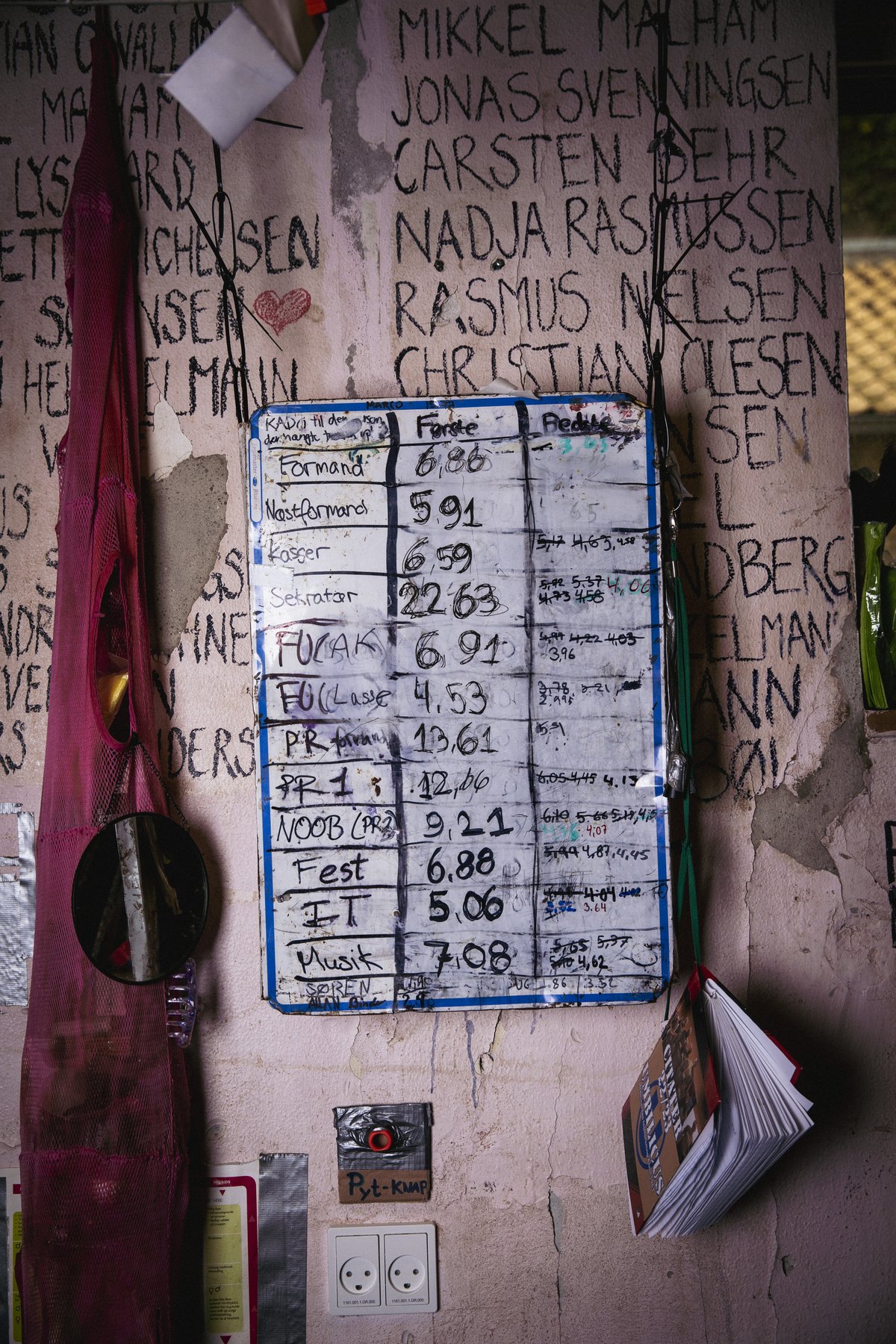The organisers of this year’s Regatta are working almost around the clock: "It’s a huge responsibility, but also a privilege"
When you relax onto your picnic mat and open a beer at this year’s Regatta, spare a thought for the two students behind the event, Lasse Juul Christensen and Anne Kirstine Andersen, who have been working since September last year – and some days around the clock.
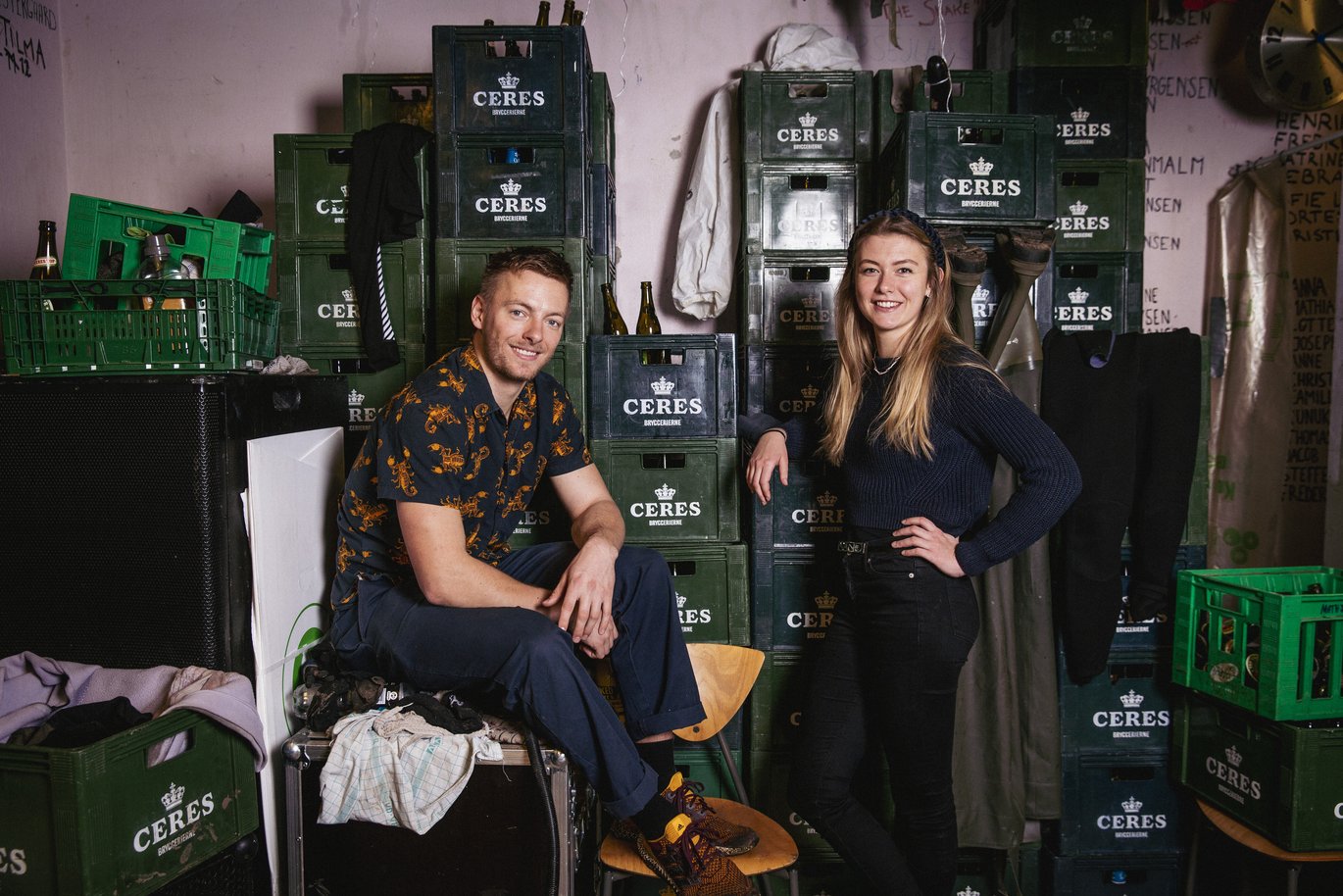
For most students, the Regatta is something you turn up for on the day or perhaps the night before. Your preparation usually consists of packing a picnic blanket, a couple of beers and a pack of cards. But for Lasse Juul Christensen and Anne Kirstine Andersen, the preparations for this notorious April event began last year – and required a lot more planning than throwing a few things in a rucksack.
Since September last year, the two Master’s students on the medical degree programme have spent almost all their waking hours juggling the several aspects required to organise what is described as Northern Europe’s largest student event, with up to 20,000-30,000 spectators. A job that includes everything from signing sponsorship agreements to making emergency response plans.
When Omnibus first met Lasse Juul Christensen in the University Park one Friday morning, he also had to conduct a walk-and-talk with a consultant to discuss foam material for this year’s boats. Once he’d waved goodbye to the consultant, we moved on to Umbilicus’ (the social society for medicine, ed.) meeting room, kælderen, which is located below the rooms that house their notorious Friday bar.
Anne Kirstine Andersen had just arrived and was hanging up her coat. Both organisers were tired, since they had held a social event with the Politological Society (the social society for political science, ed.) the evening before in the very same room in order to “improve the collaboration and sense of community” between the two societies.
The strong and overpowering smell of new and stale beer – as well as other indescribable aromas – hits your nostrils before you even enter the room. But Lasse Juul Christensen and Anne Kirstine Andersen have learned to live with the smell, which is now part of the charm. Once you get over the smell, your eyes are overwhelmed by the remarkable and unique displays that adorn the walls and ceilings.
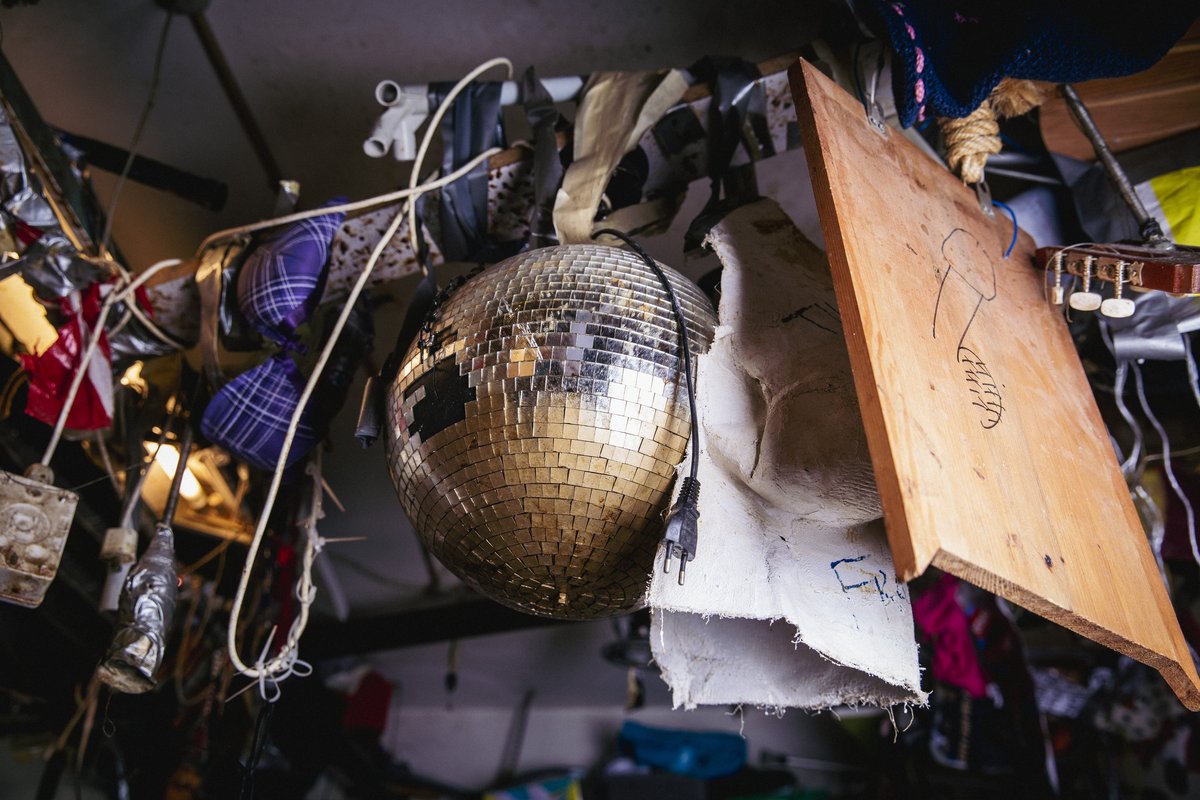
Plaster-cast breasts, worn-out teddy bears and stuffed birds are just a few of the items that meet your gaze. All these objects are relics of decades of experiences and potential life-long relationships in the Umbilicus society:
“Every single thing in this small room has its own history,” says Anne Kirstine Andersen, while her eyes scan the ceiling of what can be called the Regatta’s headquarters.
According to her and Lasse Juul Christensen, it is with a sense of awe and privilege that they are taking on the task of organising the event:
“For us, this is probably the biggest thing we can create in our current life phase. After all, we are just ordinary students, and we didn’t know anything about what it would be like to organise the Regatta. Now we are allowed to decide everything, and it’s a huge responsibility, but also a privilege. It’s so great that we have the chance to do this,” explains Lasse Juul Christensen.
A packed diary
In addition to being a huge honour, the role of organiser is also a huge job. When asked what their diaries look like now they are juggling their studies, the Regatta and their private lives, they both answer almost simultaneously:
“Critical,” after which they both let out a nervous laugh.
“Yes, our diaries are certainly full. There are some things we cannot manage. For example, we don’t eat anything other than fast food at the moment, and unfortunately we don’t get to see our other friends very much. On the other hand, we get to spend our time with the rest of Umbilicus. AK (Anne Kirstine’s nickname, ed.) and I spend most days together,” says Lasse Juul Christensen.
The last five weeks have been a particularly hard logistical nut to crack, since the two organisers have been in clinical training from 08:00 to 15:00 every day, gaining practical experience as part of their medical degree programme.
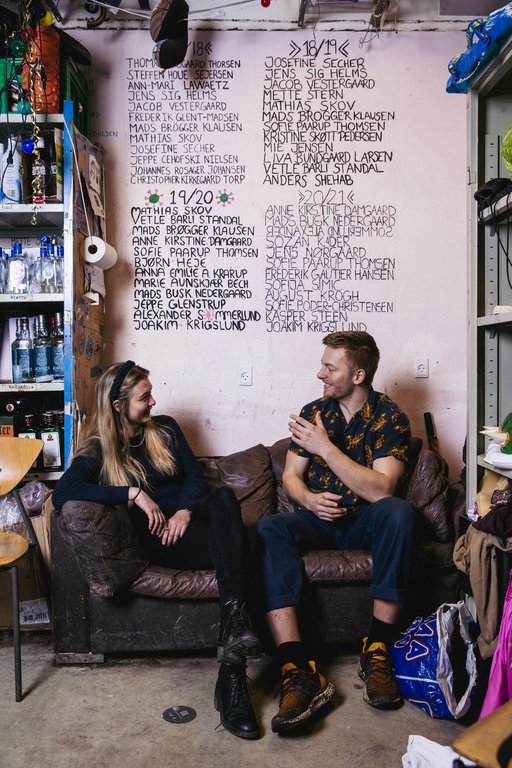
We’ll make up for lost study time after the Regatta
On the medical degree programme, it’s not unusual to divide a semester up so that you can study part-time for a while, and this is what both Anne Kirstine Andersen and Lasse Juul Christensen did last semester. This meant they had a more flexible timetable when they started planning the Regatta. And now that their compulsory clinical training is over, they once again have a more flexible teaching schedule, and they plan to make up for any study time they’ve lost once the Regatta is over. They are keen to put an end to the rumour that they had to take leave from their studies in order to arrange the Regatta:
“That is simply not true,” says Anne Kirstine Andersen.
A typical day organising and studying
The two organisers often have a packed programme from early morning until late evening. They describe a typical day juggling the Regatta, their studies and their social life:
“We meet at 08:00 and go to class. We have four hours of compulsory teaching. Then we grab a quick lunch and head straight across to Nobel for a meeting. After this, we usually have another two or three meetings. Then we spend time arranging a few practical things for the Regatta. For example, on Wednesday, I went home and did some work on the accounts,” explains Anne Kirstine Andersen.
Their afternoons and evenings often consist of social events with the other societies involved in the Regatta, and in addition to all the planning work, there is another important aspect of the Regatta the two organisers need to consider: training at the lake.
Because even though the pair are members of the Umbilicus executive committee and coordinators of the event, they are also ordinary members of the society, and, like the others, they have to train in order to qualify to sail in the race itself.
So having shown me their unique meeting room, they put on their sports gear and head down to the winter-cold lake to demonstrate their training regime.
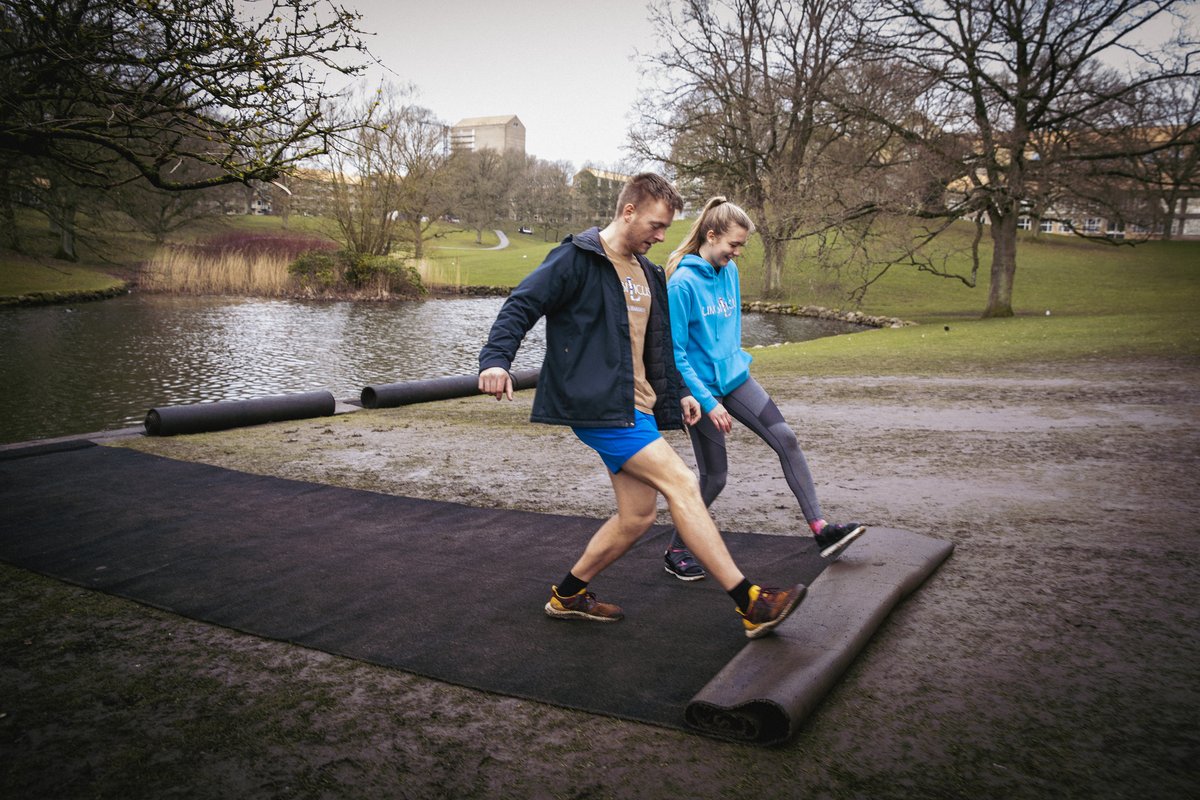
First they need to roll out long mats, because many societies train on a daily basis, which turns the area by the lake into a huge slippery slide of trampled grass and mud.
The division of labour is clear: Lasse is the sailor and AK is the boat turner. Lasse Juul Christensen is therefore wearing a pair of shorts, a T-shirt and ankle socks, while Anne Kirstine Andersen is sporting a pair of waders so that she can stand waist-deep in the water and have the paddle and boat ready. The training to qualify for the official sailing team has already started, long before the spring sun brings any pleasant weather to the University Park.

“This is one of the things we think is so great about the Regatta: that it brings students from different degree programmes together and creates communities that we are convinced cannot be found anywhere else in the country.”
Training for the Regatta is another time commitment that the two organisers have to schedule in their already busy diaries. But despite this, the sailing, the selection parties and the social evenings with sailors from the other societies all help to make up the community that drives all the work they are putting into organising the event.
“This is one of the things we think is so great about the Regatta: that it brings students from different degree programmes together and creates communities that we are convinced cannot be found anywhere else in the country,” says Lasse Juul Christensen.
“Yes, even though the students who watch us and our songs on YouTube (in which we claim we’ll reign supreme) might think that we’re just competitors, under the surface, we are actually really good friends and love spending time together,” continues Anne Kirstine Andersen.
It’s definitely worth it
Even though their diaries are already full and there is pressure on them to deliver a successful event, they can still balance everything:
“There are often days when you get home and just need to lie down and stare at the ceiling for 15 minutes to de-stress, because you’ve been super busy since seven in the morning until ten in the evening, and you know you’re going to have to get up and do exactly the same thing again tomorrow. You certainly need to be the sort of person who enjoys having lots going on the whole time,” says Lasse Juul Christensen.
“What makes a difference for us is that we’re allowed to immerse ourselves in something we find really exciting. Because at the end of the day – even though there is a lot of paper work and technical jobs – we do it because we love it, and it’s hard to get tired of it. We genuinely think it’s an amazing thing to do. It’s definitely worth it,” explains Anne Kirstine Andersen.
With detailed guidance and input from previous organisers, Aarhus University, East Jutland Police, Aarhus Municipality and East Jutland Fire Service, the pair feel well prepared to support and cater for the 20,000-30,000 spectators on the day itself. The whole process has also given them experience within administration and planning that will benefit them for the rest of their lives. However, their primary motivation is undoubtedly their love for the Regatta and the desire to preserve and renew its traditions and unique sense of community.
Translated by Sarah Louise Jennings.


